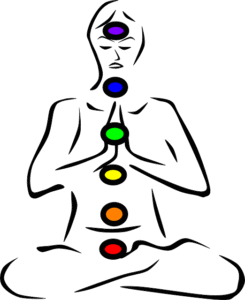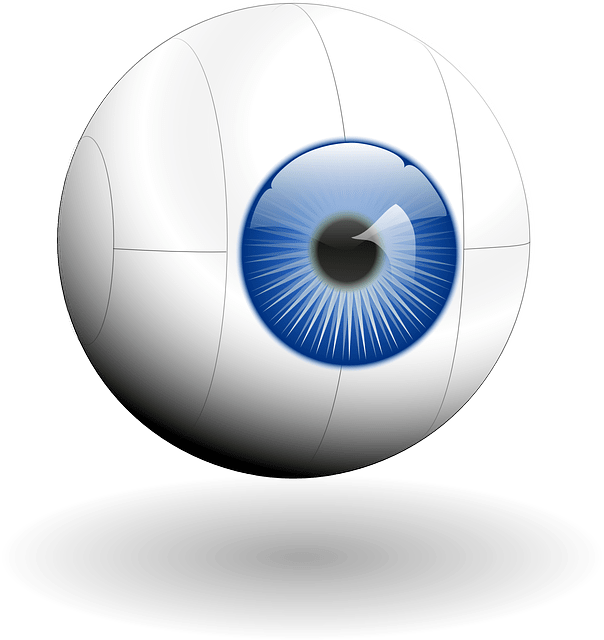📝 Introduction
In a world of noise and nonstop input, the ability to gain clarity is more valuable than ever.
Whether you’re chasing professional success or simply trying to feel more aligned with your life’s purpose, clarity can serve as your inner compass.
Yet, many of us wander in a fog — unsure, overwhelmed, and detached from what truly matters.
Clarity doesn’t arrive by accident. It’s cultivated deliberately through practices rooted in psychology, neuroscience, and ancient wisdom.
Backed by experts and peer-reviewed research, this guide walks you through 11 powerful strategies to help you reconnect with your center and move forward with calm confidence.
Let’s explore these clarity-boosting practices that thousands — from executives to everyday people — use to find direction and peace.
📊 Key Takeaways
| Practice | Expert Insight | Benefit |
|---|---|---|
| Mindfulness Meditation | Jon Kabat-Zinn | Reduces internal noise, sharpens focus |
| Journaling | Dr. James Pennebaker | Helps process emotions, enhances self-awareness |
| Digital Detox | Cal Newport | Protects attention span, restores mental energy |
| Values-Based Living | Dr. Russ Harris | Aligns choices with core life priorities |
| Nature Therapy | Florence Williams | Decreases stress, improves cognitive clarity |
🧘 Understand the Roots of Mental Fog
🧠 What Causes Mental Clutter?
Mental fog isn’t a mystery — it’s the natural consequence of modern life.
The average person processes roughly 74 gigabytes of information per day, according to research from the University of California, San Diego (source).
Emails, social feeds, alerts, ads — they all pile up, creating a traffic jam in your cognitive lane.
Moreover, chronic stress, multitasking, and decision fatigue burn through your mental energy. When your brain is constantly reacting, it doesn’t have time to reflect.
The result? You feel scattered, distracted, and out of sync with yourself.
Emotional overload, unresolved inner conflict, and external chaos also generate internal static.
Without regular inner housekeeping, your mental space becomes cluttered — just like a room you never clean.
🗣️ “When the mind is full of noise, clarity becomes a distant echo.”
🧪 The Neuroscience Behind Clarity.
From a neuroscience perspective, clarity lives in the prefrontal cortex — the area of your brain responsible for higher-order thinking, planning, and decision-making.
But stress, anxiety, and over-stimulation hijack that region.
Dopamine, the brain’s motivation molecule, also plays a role in clarity.
According to a 2012 article in Nature Reviews Neuroscience, balanced dopamine levels enhance focus, motivation, and cognitive performance (source).
When you quiet the limbic system (the emotional brain) and activate the prefrontal cortex, your brain shifts from chaos to clarity.
🧘♀️ Practice Mindfulness Daily.
🧘 Meditation and Breathing.
Mindfulness is the most accessible and evidence-based tool to clear mental fog.
In fact, research from the American Psychological Association shows that even 10 minutes of mindfulness a day improves attention, emotional regulation, and working memory (source).
Jon Kabat-Zinn, creator of Mindfulness-Based Stress Reduction (MBSR), defines mindfulness as “paying attention in a particular way: on purpose, in the present moment, and non-judgmentally.”
His MBSR program, studied globally, reduces psychological distress and promotes self-awareness (MBSR Program).
✅ Try this:
- Sit quietly and focus on your breath.
- Inhale slowly to the count of four.
- Exhale to the count of six.
- Repeat for 5–10 minutes.
Breathing deeply regulates the nervous system, reduces cortisol, and invites clarity.
🌬️ Grounding and Body Awareness
Your body is a gateway to the present. Practices like progressive muscle relaxation, body scans, or yoga train you to feel instead of think. This physical grounding counteracts the cerebral overload of modern life.
According to a study published in Frontiers in Psychology, grounding techniques significantly reduce anxiety and increase attention (source).
🧘 “When your body arrives where your mind is, peace follows.”
📿 Apps and Tools for Support
Technology can support mindfulness — when used wisely. Apps like:
- Calm: Guided meditations, sleep stories
- Headspace: Science-based daily sessions
- Insight Timer: Free library of 100k+ tracks
A 2017 study in Journal of Cognitive Enhancement confirmed that these apps improve mood, attention, and memory over time (source).
The key? Use tech to tune inward, not check out.
✍️ Gain Clarity Through Journaling
📓 The Science of Expressive Writing
Writing things down unclogs mental bandwidth. Dr. James Pennebaker, a pioneer in expressive writing, found that journaling reduces anxiety and improves immune function (source).
By putting emotions into words, we move from chaos to coherence. Thought becomes form. Feelings gain meaning.
✅ Try this:
- Set a timer for 15 minutes
- Write freely about what’s on your mind
- Do not edit — let it flow
Even once a week can lead to cognitive breakthroughs.
🗒️ Journaling Prompts That Clarify Thoughts
If you’re unsure what to write, prompts can guide you:
- “What do I feel unclear about today?”
- “What would I do if fear wasn’t in the way?”
- “What needs to be released?”
These questions activate metacognition — thinking about your thinking — and open space for insight.
📘 Recommended Journaling Methods
Different methods serve different needs:
- Bullet journaling: Track habits, tasks, reflections
- Morning pages (from The Artist’s Way): Write 3 pages of stream-of-consciousness
- Gratitude journaling: Record 3 things you’re thankful for
Each one boosts clarity from a different angle — organizational, emotional, or energetic.
📵 Disconnect to Reconnect
🧹 Digital Declutter Strategies
The average person checks their phone 96 times a day. That’s once every 10 minutes, according to research by Asurion (source).
Cal Newport, author of Digital Minimalism, argues that constant connectivity fractures our attention and erodes our ability to think deeply.
He advocates for intentional technology use, where each digital tool must serve a clear purpose (source).
✅ Try this 3-step digital detox:
- Audit: List every app/site you use daily.
- Eliminate: Remove non-essential ones for 30 days.
- Reintroduce: Only what aligns with your goals.
🧭 The Role of Silence and Solitude.
Clarity doesn’t scream — it whispers. And to hear it, you need silence.
Studies have shown that two hours of silence per day enhances neurogenesis (brain cell growth), particularly in the hippocampus, which governs learning and memory (source).
Florence Williams, in her book The Nature Fix, describes how natural silence (like that found in forests or deserts) restores cognitive clarity and emotional balance.
Solitude, too, has its gifts. It offers space to reflect, reset, and reclaim your mind from the world’s demands.
🗣️ “Silence is not empty. It’s full of answers.”
🪞 Align with Your Core Values
❤️ Identifying What Truly Matters
When you feel unclear, chances are you’re disconnected from your values. Values are the internal compass that guide decisions, behaviors, and relationships.
Without knowing what matters most to you, even the best habits or routines can feel hollow.
Acceptance and Commitment Therapy (ACT), developed by Dr. Steven C. Hayes, emphasizes values as the foundation of psychological flexibility.
It teaches that clarity comes not from eliminating discomfort, but from committing to actions that reflect your deepest principles (source).
✅ How to identify your core values:
-
Write down moments in life when you felt proud or alive
-
Identify the values at play (e.g., integrity, creativity, kindness)
-
Use a values card sort (free tool) to narrow them down
You’ll start to notice which decisions align with your core and which create tension. That’s clarity in motion.
🧭 The Role of Purpose in Clarity
Purpose adds structure to values. It’s how your values manifest as direction.
According to a Stanford research study, individuals who operate with a clear sense of purpose are more focused, resilient, and emotionally grounded (source).
🔍 “Purpose isn’t found. It’s built — by living each day in alignment with your values.”
Ask yourself:
-
What energizes me even when it’s hard?
-
What would I work toward even if no one was watching?
-
Whose life do I want to impact, and how?
When the answers to these questions emerge, your decisions become easier and more intuitive.
🌱 Expert Advice from Dr. Russ Harris
Dr. Russ Harris, author of The Happiness Trap, offers a science-backed framework called The ACT Matrix. It’s a simple visual tool to notice:
-
What pulls you away from your values
-
What moves you toward them
-
How thoughts and feelings affect action
According to Harris, clarity comes not from perfect plans, but from choosing what matters, even when your mind resists. Learn more at The Happiness Trap.
✅ His practical mantra:
“Notice the thought. Name the value. Take the step.”
That’s clarity — not as a concept, but as a lived experience.
🌿 Let Nature Restore Your Mind.
 🌲 The Healing Power of Nature.
🌲 The Healing Power of Nature.
Nature doesn’t just soothe — it rewires the brain.
According to research published in Frontiers in Psychology, exposure to nature improves cognitive function, reduces stress, and enhances mood (source).
Florence Williams, author of The Nature Fix, explains that even 15 minutes in a natural setting can lower cortisol, blood pressure, and mental fatigue.
Forest bathing — a practice known in Japan as “shinrin-yoku” — is now used as a preventive medicine protocol by doctors in multiple countries (source).
You don’t need a wilderness retreat. A city park, a garden, or even gazing at trees through a window can spark mental restoration.
🌤️ Movement + Nature = Clarity Amplified.
Combine physical movement with time outdoors and you create an even stronger boost in mental clarity.
Exercise increases blood flow to the brain, while fresh air and sunlight regulate your circadian rhythm, which governs energy and focus.
✅ Try these combos:
-
Morning walk without your phone
-
Weekend hike on a trail
-
Barefoot walk in grass (a grounding practice)
A 2018 study from the University of East Anglia found that people who spend more time in green spaces had lower levels of cortisol and higher subjective wellbeing (source).
🌼 Creating Your Own “Clarity Ritual”
Nature doesn’t need to be a luxury — it can be a daily ritual. Consider:
-
Tending to a small garden or houseplant
-
Eating lunch outdoors
-
Watching a sunrise or sunset with full attention
These micro-moments recalibrate the mind and reconnect you with a world beyond the screen.
🌱 “In stillness, nature speaks. In listening, you gain clarity.”
🏁 Conclusion
To gain clarity is a process — not a lightning bolt moment. It comes from choosing presence over distraction, values over noise, and purpose over perfection.
Whether you’re sitting in stillness, journaling your thoughts, walking through trees, or simplifying your digital life, each step is a return — back to your true self.
Clarity doesn’t mean life becomes easy. It means life becomes real, intentional, and beautifully yours.
In a society that rewards speed and noise, choosing clarity is a radical act of self-respect.
📣 To Do Now.
The journey to gain clarity begins with just one small shift.
Here’s how you can start right now:
-
Pick one practice from this article
-
Set aside 10 minutes today to try it
-
Reflect: “How did that change how I feel?”
👉 Share this article with someone feeling overwhelmed — they might need this guide as much as you do.
And if you found value here, bookmark it. Clarity isn’t one-and-done — it’s a practice. Return to it often.
✅ Frequently Asked Questions On Gain Clarity.
❓ What does it mean to “gain clarity”?
Answer: Gaining clarity means achieving mental, emotional, and spiritual focus — understanding what matters most and making decisions aligned with your values.
❓ How can mindfulness help with clarity?
Answer: Mindfulness reduces cognitive noise and improves focus by training your brain to stay present, decreasing distractions and stress.
❓ Can journaling really improve self-awareness?
Answer: Yes. Research shows that expressive writing helps organize thoughts and process emotions, leading to clearer thinking and personal insight.
❓ Why is digital detox important for clarity?
Answer: Constant digital stimulation overwhelms attention. A detox reclaims mental space and restores your capacity for deep thought and focus.
❓ How does nature therapy improve mental clarity?
Answer: Nature reduces cortisol, restores attention, and promotes calmness, making it easier to reflect and think clearly.
✅ References & Citations
-
Pennebaker, J. W. (2017). Expressive Writing and Health. SAGE Journals
-
Kabat-Zinn, J. Mindfulness-Based Stress Reduction. UMass MBSR
-
Newport, C. (2019). Digital Minimalism. Author site
-
Williams, F. (2017). The Nature Fix. Author website
-
Russ Harris. (2008). The Happiness Trap. Official site
-
Stanford Study. Purpose and Wellbeing. NCBI Article
-
American Psychological Association (APA). Stress Report
-
Nature Reviews Neuroscience. (2012). Neuroscience of Decision-Making
-
Frontiers in Psychology. (2019). Nature and Cognitive Function. Link
-
Asurion Study. Phone Use Stats. Source


